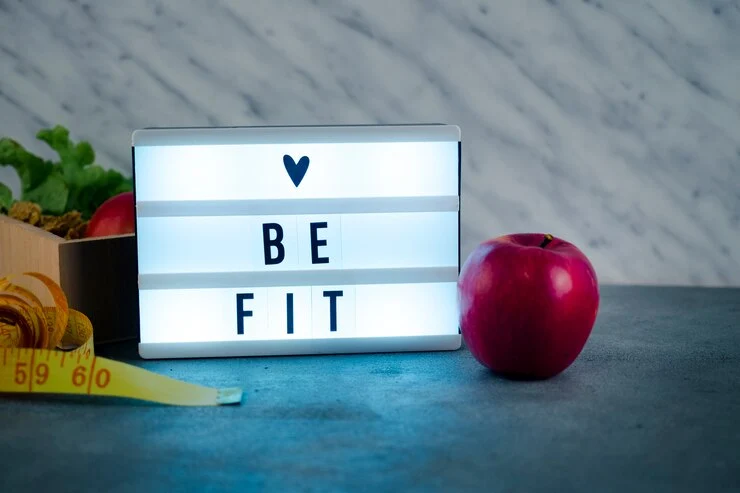How to reduce high blood pressure naturally at home
Introduction
High blood pressure, also known as hypertension, affects millions of people worldwide and is a significant risk factor for heart disease, stroke, and other health complications. While medication can help manage blood pressure, making lifestyle changes can also play a crucial role in lowering it naturally. In this article, we’ll explore ten effective ways to reduce high blood pressure from the comfort of your home.
Adopt a Balanced Diet

Understanding High Blood Pressure: High blood pressure, or hypertension, is a common health condition linked to various complications such as heart disease and stroke. Dietary choices play a crucial role in its management.
Focus on Nutrient-Rich Foods: Incorporate plenty of fruits, vegetables, whole grains, and lean proteins into your meals. These foods are packed with essential nutrients that support heart health and help lower blood pressure.
The Importance of the DASH Diet: Consider following the Dietary Approaches to Stop Hypertension (DASH) diet, which emphasizes whole foods and limits sodium intake. Studies have shown that the DASH diet can significantly reduce blood pressure levels.
Control Sodium Intake: Limit your consumption of processed foods, which are often high in sodium. Opt for fresh, homemade meals seasoned with herbs and spices instead of salt.
Stay Hydrated: Drink plenty of water throughout the day to stay hydrated and support healthy blood flow. Limit sugary beverages and opt for water or herbal tea as your primary drinks.
Limit Sodium Intake
- Understanding the Impact of Sodium: Consuming too much sodium can contribute to high blood pressure, also known as hypertension, by causing the body to retain water, which increases blood volume and pressure on the arterial walls.
Read Food Labels: Be vigilant about reading food labels and choose products with lower sodium content. Processed and packaged foods often contain hidden sodium, which can unknowingly contribute to high blood pressure.
Cook at Home: Prepare meals at home using fresh, whole ingredients to have better control over your sodium intake. Homemade meals allow you to season with herbs, spices, and other flavorings instead of relying on salt.
Opt for Low-Sodium Alternatives: Choose low-sodium or sodium-free versions of condiments, sauces, and canned goods whenever possible. These alternatives can help you reduce your overall sodium intake without sacrificing flavor.
Maintain a Healthy Weight

Understanding the Link: Being overweight or obese is closely associated with high blood pressure, also known as hypertension. Excess weight puts additional strain on the heart and blood vessels, increasing the risk of hypertension and other cardiovascular complications.
Set Realistic Goals: Establish realistic weight loss goals based on your current weight, overall health, and medical history. Aim to achieve a gradual and sustainable weight loss of 1-2 pounds per week to reduce the risk of high blood pressure and improve overall well-being.
Adopt a Balanced Diet: Focus on consuming a balanced diet rich in fruits, vegetables, whole grains, and lean proteins to support weight loss efforts and manage high blood pressure. Avoiding excessive intake of processed foods, sugary beverages, and high-fat foods can help control calorie intake and promote weight loss.
- Engage in Regular Exercise: Incorporate regular physical activity into your daily routine to aid in weight management and lower high blood pressure. Aim for at least 150 minutes of moderate-intensity aerobic exercise or 75 minutes of vigorous-intensity exercise per week, along with muscle-strengthening activities on two or more days.
Manage Stress
Understanding the Connection: Chronic stress can contribute to high blood pressure, also known as hypertension, by triggering the release of hormones that constrict blood vessels and increase heart rate. Managing stress effectively is essential for maintaining healthy blood pressure levels.
Practice Relaxation Techniques: Engage in relaxation techniques such as deep breathing, meditation, progressive muscle relaxation, or yoga to reduce stress levels and lower high blood pressure. These techniques promote relaxation and help counteract the physiological effects of stress on the body.
Prioritize Self-Care: Make self-care a priority by engaging in activities that bring joy and relaxation, such as spending time outdoors, pursuing hobbies, or connecting with loved ones. Taking time for yourself can help alleviate stress and prevent the development of high blood pressure.
Stay Active: Regular physical activity is an effective way to manage stress and reduce high blood pressure. Exercise releases endorphins, which are natural stress relievers, and promotes overall well-being. Aim for at least 150 minutes of moderate-intensity aerobic activity or 75 minutes of vigorous-intensity activity per week to reap the stress-reducing benefits.
Get Adequate Sleep: Prioritize quality sleep by establishing a regular sleep schedule, creating a relaxing bedtime routine, and optimizing your sleep environment. Adequate sleep is essential for stress management and maintaining healthy blood pressure levels.
Quit Smoking

Understanding the Risks: Smoking is a significant risk factor for high blood pressure, also known as hypertension. The chemicals in tobacco smoke can damage blood vessels and increase the risk of heart disease, stroke, and other cardiovascular complications.
- Recognize the Impact: Smoking contributes to high blood pressure by causing the arteries to narrow, reducing blood flow, and increasing the heart rate. Quitting smoking is essential for reducing the risk of hypertension and improving overall cardiovascular health.
Set a Quit Date: Choose a specific date to quit smoking and commit to it. Setting a quit date can help you mentally prepare for the transition and increase your chances of success in quitting smoking for good.
Explore Nicotine Replacement Therapy (NRT): Consider using nicotine replacement therapy, such as nicotine patches, gum, lozenges, or inhalers, to help manage cravings and gradually reduce nicotine dependence. NRT can support your efforts to quit smoking and lower high blood pressure.
Focus on Health Benefits: Remind yourself of the health benefits of quitting smoking, including lower high blood pressure, improved lung function, reduced risk of heart disease and stroke, and increased life expectancy. Keeping these benefits in mind can motivate you to stay smoke-free.






